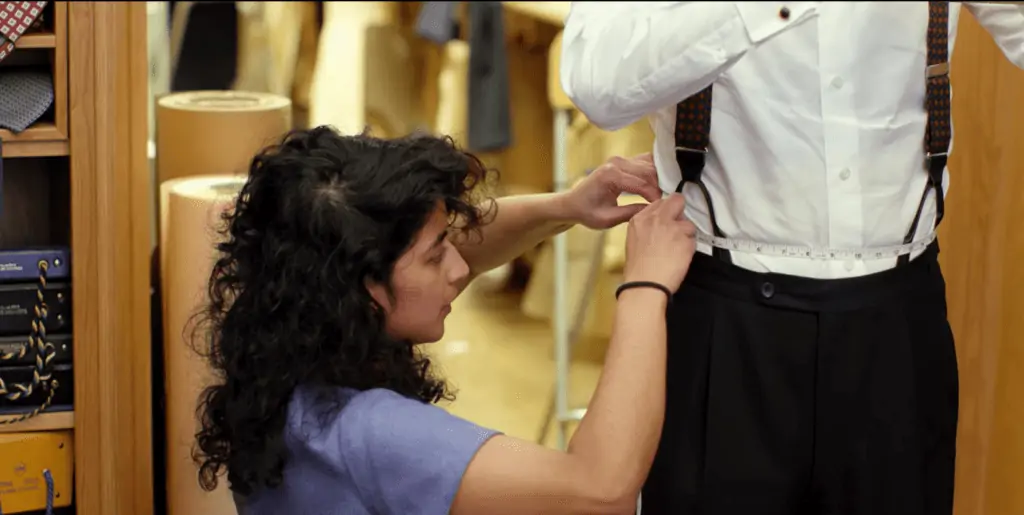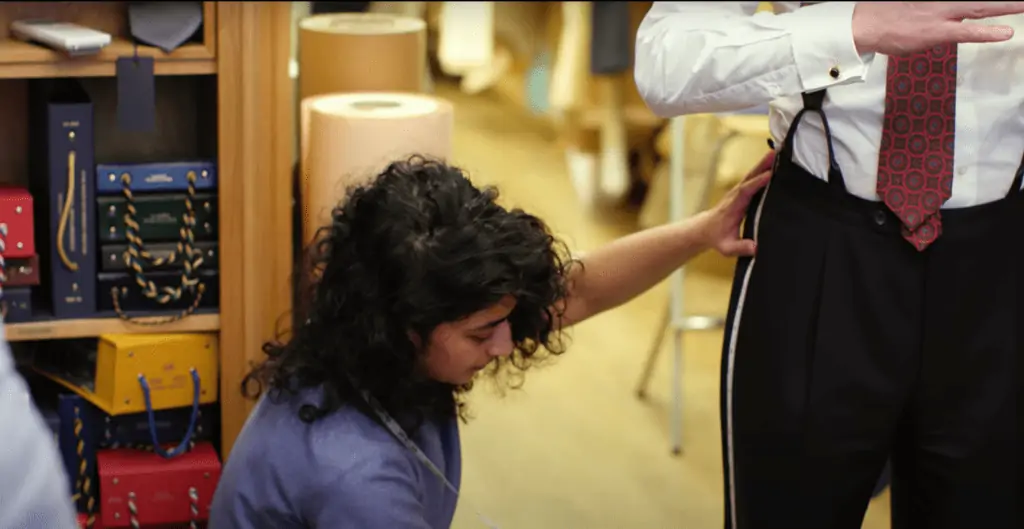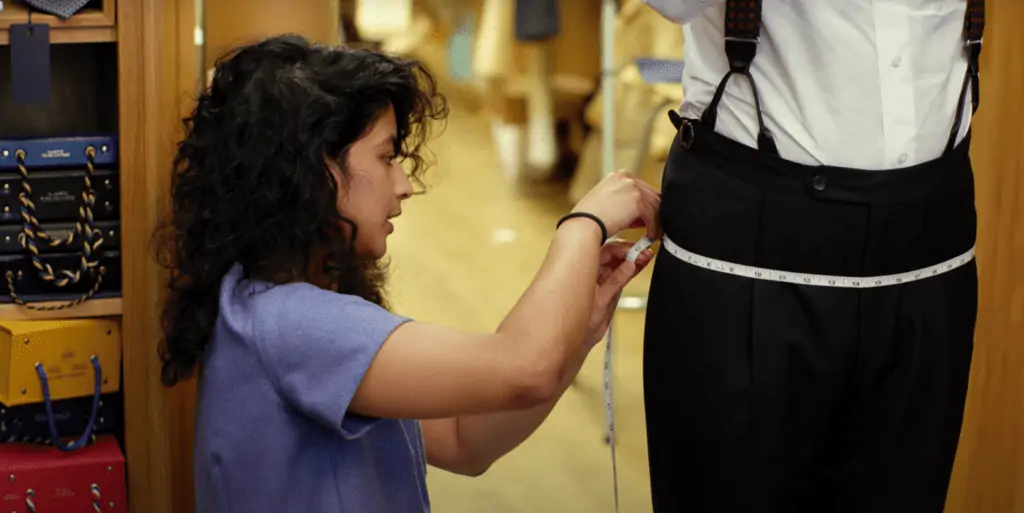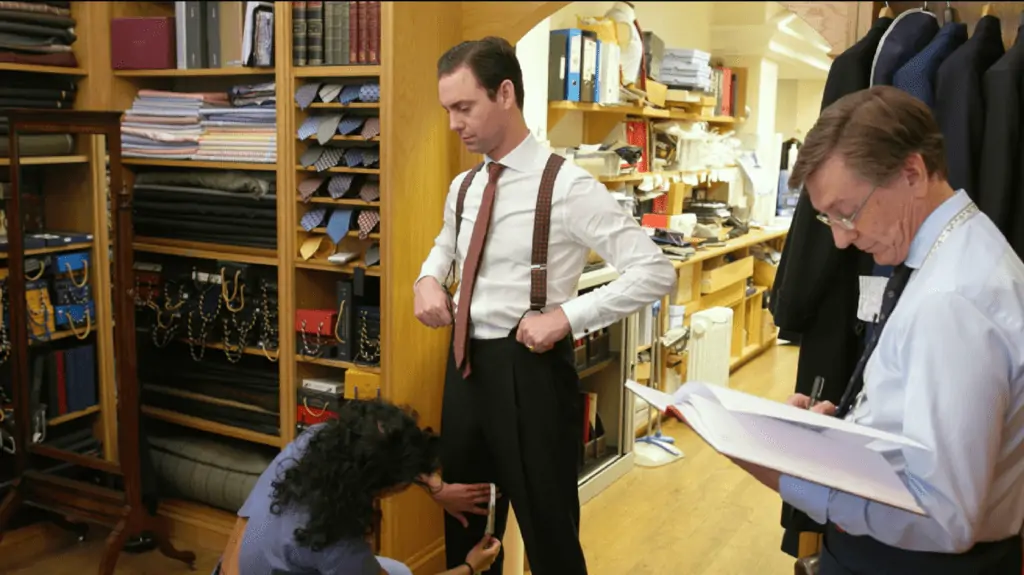Whether you’re shopping for a suit for a special occasion or just for a more professional look, it’s important to make sure that your suit fits you perfectly. Measuring for a suit is an important process for both men and women to ensure the perfect fit and it is important to take the time to ensure that you have the correct measurements.
This guide will walk you through the steps for measuring for a suit and provide tips to ensure your measurements are accurate.
Measure a suit in a few simple steps
Whether you are purchasing a suit off the rack or having one custom-made, it is important to take accurate measurements.
Measuring the suit jacket
We’ll begin with taking the upper body measurements first. The jacket needs to fit snugly without being too tight or too relaxed. However, it also needs to leave enough room so you can move around freely. Let’s go over the steps to take the perfect measurements for your suit jacket.
Step 1: Measure Your Torso
The first step in measuring a suit is to measure your torso length. Start by measuring from the back of your neck down to where you would normally wear trousers or a skirt at the waistline — essentially just below wherever they’d rest on hips and below the navel area.
Make sure not to draw this tape measure too tightly as you may miss the length through the curves of your body and end up taking a straight measure.
Step 2: Measure the Shoulders

Next, we measure the shoulders. Start by taking a measuring tape and placing it at one end of where your shoulder blades meet in the back.
Then run this tape down along the arm towards the elbow before bringing it up over across the chest again until reaching its starting point on top of the other shoulder blade. Make sure not to draw this too tightly when taking these readings as doing so could lead to inaccurate results being recorded instead.
Step 3: Measure Your Chest

The next step is to take measurements around your chest. You can do this by wrapping a measuring tape around yourself just under each armpit with it passing through the front center part of your body — making sure not to pull it too tight either during these readings since accuracy is important here!
This will give you an idea about what size jacket would be best suited for fitting comfortably without bunching up when worn afterward.
Step 4: Measure Your Sleeve Length

Once you have taken torso length and shoulder width measurements, then move on to recording arm lengths which are also very crucial factors when choosing between different types of suits.
Start by placing the measuring tape at the shoulder joint and then running it down along your arm until reaching either just above or below where you would normally wear a shirt cuff.
Again make sure not to pull too tightly as we want the arms to be free enough without looking baggy.
Step 5: Measure Your Waist

To get an accurate fit for your suit, you’ll also need to measure around the circumference of your waist. To do this, start by wrapping a cloth or plastic measuring tape around yourself just above where trousers would normally rest on the hips. This will give you an idea about what size trousers would be best suited for fitting comfortably without bunching up when worn afterward.
Measuring the dress pants or trousers
If you’re buying a three-piece suit, you also need to take measurements for your dress pants or trousers. This one is much easier. Let’s go over the steps to take these measurements.
Step 1: Measure trouser height

Start with measuring the trouser height, which is simply a measurement from the waistband of your trousers to wherever they would normally rest on top of your shoes. You can also choose the size to be longer or shorter depending on what’s comfortable for you.
Step 2: Measure Your Hips

Now, you need to get an accurate fit by measuring around the circumference of the buttocks — essentially just below where trousers or skirts would naturally sit. Pull a tape measure around the fullest part of your buttocks without measuring it too tightly. You need the pants to give you enough room as you bend or sit.
Step 3: Measure Your Inseam

In addition to the other steps above, you must also take an inseam measurement. To do this, have the person being fitted stand with feet apart at a shoulder-width distance and then measure from the crotch all way until the bottom of the pant leg – record measurement (in inches) as most size charts.
Compare the suit measurements with the size chart.
Once you’ve taken all these measurements, check your size chart to see what sizes fit best according to body type!
Keep in mind that many clothing brands might vary slightly when it comes to their sizing guidelines. But having accurate numbers on hand should help narrow down searches even more quickly than before.
Tips for measuring a suit
- Keep the tape measure straight — but only lightly pulled — throughout when taking measurements. This will ensure accurate readings and help you get a better-fitting suit that is tailored to your body’s individual shape.
- When measuring around your chest, make sure not to draw it too tightly as this could lead to an uncomfortable shirt fitting.
- If you’re purchasing a suit instead of tailoring one, try on several different sizes before making a final decision. Doing so can really give an idea of how each type looks and feels once worn.
- When measuring your arm length, make sure the tape measure is placed at shoulder joint level. Then run it down along your arm until reaching either just above or below where you would normally wear a shirt cuff.
FAQs about suit measurement
How should I measure my suit’s sleeve length?
When measuring your suit’s sleeve length, ensure that you have bent your arm at a 90-degree angle and start from just below the shoulder blade. Wrap the tape around until it reaches to middle finger joint level and take note of this measurement in inches.
What should I do with my suit measurements once I have them?
Once you’ve taken all of your suit measurements, check the size chart to see which sizes fit best according to your body type. Remember that different brands may vary slightly in their sizing guidelines so it is important to be aware of this when shopping for a suit.
What if I need to make alterations after my suit has arrived?
If you find that your suit needs adjustments, it is best to take it to a professional tailor who can help with any necessary changes.
Look sharp in your perfect-fitting suit!
Measuring a suit is an important step in making sure that it fits you perfectly. Taking accurate measurements and then checking size charts can help make the process much easier, so take the time to do it right!
Kiwi Sizing Charts are perfect for Shopify brands looking to provide customers with detailed sizing information — fully customizable to your brand and product.
Thanks to the easily customizable templates + user-friendly interface, you can create perfect-size charts for any product that requires sizing. Kiwi also offers a powerful size recommendation feature that uses AI to automatically predict a customer’s size. By answering just a few questions, your customers can have accurate sizing suggestions, while reducing returns for you.


